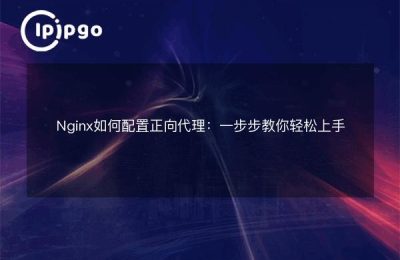
The Concept and Working Principle of Positive Proxies
Hey internet peeps, today I'm going to talk to you about an amazing being that is a proxy. Speaking of proxies, some people may think of it as something similar to a vest, something that replaces an identity. However, the proxy we're going to talk about today doesn't play a role in this regard, it's an existence that has a special function in the online world.
First, let's take a look at the forward proxy, which, as the name suggests, is a middleman that sits between the client and the server. Hey, don't you have a feeling that you are being counted by them jointly? Let's say you intend to visit a certain website, but your request is first sent to the forward proxy server, and then it forwards it to the target server for you. In this way, the target server doesn't know your real ip address directly, only the ip address of the forward proxy server.
Let's say you're in China and want to access a website in China, but for reasons that are well known, a direct connection to a domestic server is likely to be as slow as a snail's pace. This is where a forward proxy can help! It can help by setting up a server in China, sending your request to that server first, and then the server will help you access the target website. In this way, the domestic server will think that you are the forward proxy server, it is simply a master of deception ah!
Definition and working principle of reverse proxy
Continuing on from above, let's take a look at reverse proxies. Reverse proxies are somewhat similar to forward proxies in that, like them, they are intermediaries that sit between the client and the server, but their roles are different. A forward proxy is a request forwarder on behalf of the client, while a reverse proxy receives requests on behalf of the server and forwards them to the appropriate processing node.
To put it plainly, you can think of a reverse proxy as a gatekeeper for the server. When someone comes to access the server, the gatekeeper will forward the request to different back-end servers according to the access requirements (e.g., content of the web page, load balancing, etc.). In this way, the visitor is like meeting a behind-the-scenes person who has no idea about the exact server address and processing logic.
Or let's take an example to illustrate. Suppose there is a shopping site, a large number of users to visit, how to ensure that the response speed is fast, the site does not crash? This is where a reverse proxy comes into play! Reverse proxy can be based on the access situation, the request will be diverted to different servers in the website cluster, so as to effectively avoid the server overload problem, so that the website can run smoothly.
Difference between Forward and Reverse Proxy
These two types of proxies may seem similar, but in reality their roles and ways of working are quite different. A forward proxy forwards requests on behalf of the client, who communicates with the target server through the forward proxy, while a reverse proxy accepts requests on behalf of the server and routes them to the appropriate back-end server.
To take the difference a step further, forward proxies take the model that the client initiates the request and the forward proxy forwards it. Reverse proxy, on the other hand, is initiated by the client request, but the request is sent to the reverse proxy server, and then the reverse proxy server will forward the request to the back-end server. Such differences lead to different application scenarios and roles.
Application Scenarios for Forward and Reverse Proxies
Forward and reverse proxies have their own characteristics and application scenarios, which I'd like to share with you!
The application scenarios of forward proxy are relatively simple and rough, mainly for breaking network restrictions, protecting privacy and accelerating access. For example, in the above example, we mentioned that when domestic users visit domestic websites, they can use forward proxy to accelerate their access. In addition, forward proxy can also be used to bypass LAN restrictions and access blocked websites, as exciting as proxy oh!
Reverse proxies have a wider range of applications and play a very important role in the modern Internet in particular. It can be used for load balancing, distributing requests to back-end servers, and improving the concurrent processing capacity of a website. At the same time, reverse proxies can also be used to cache static content, reducing the burden on back-end servers and increasing the speed of access to the site. Wow, this is simply a great tool to take the load off the server!
put at the end
Forward and reverse proxies may sound a bit complicated, but as long as you understand how they work and the application scenarios, you will be able to easily cope with the various challenges of the network world. That's all for today, guys! I hope this helps you to have a deeper understanding of proxies!








